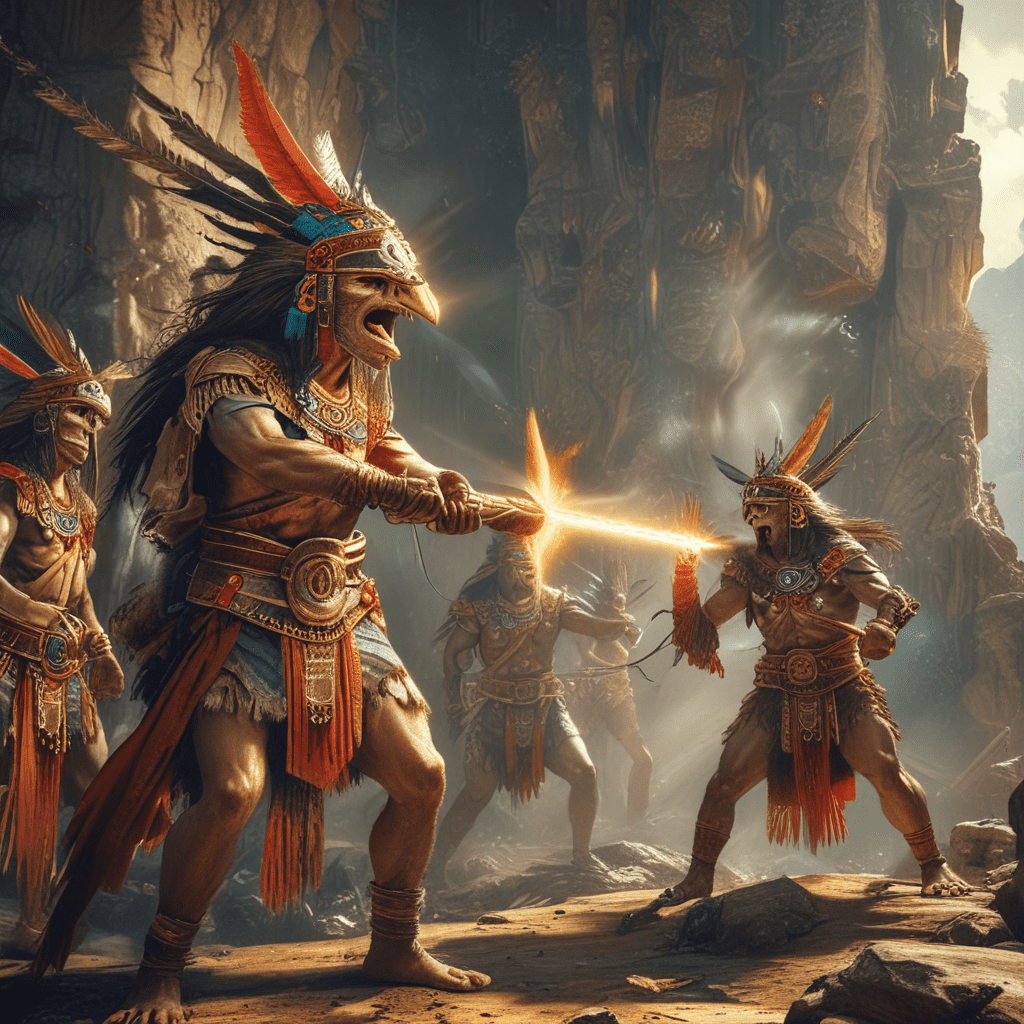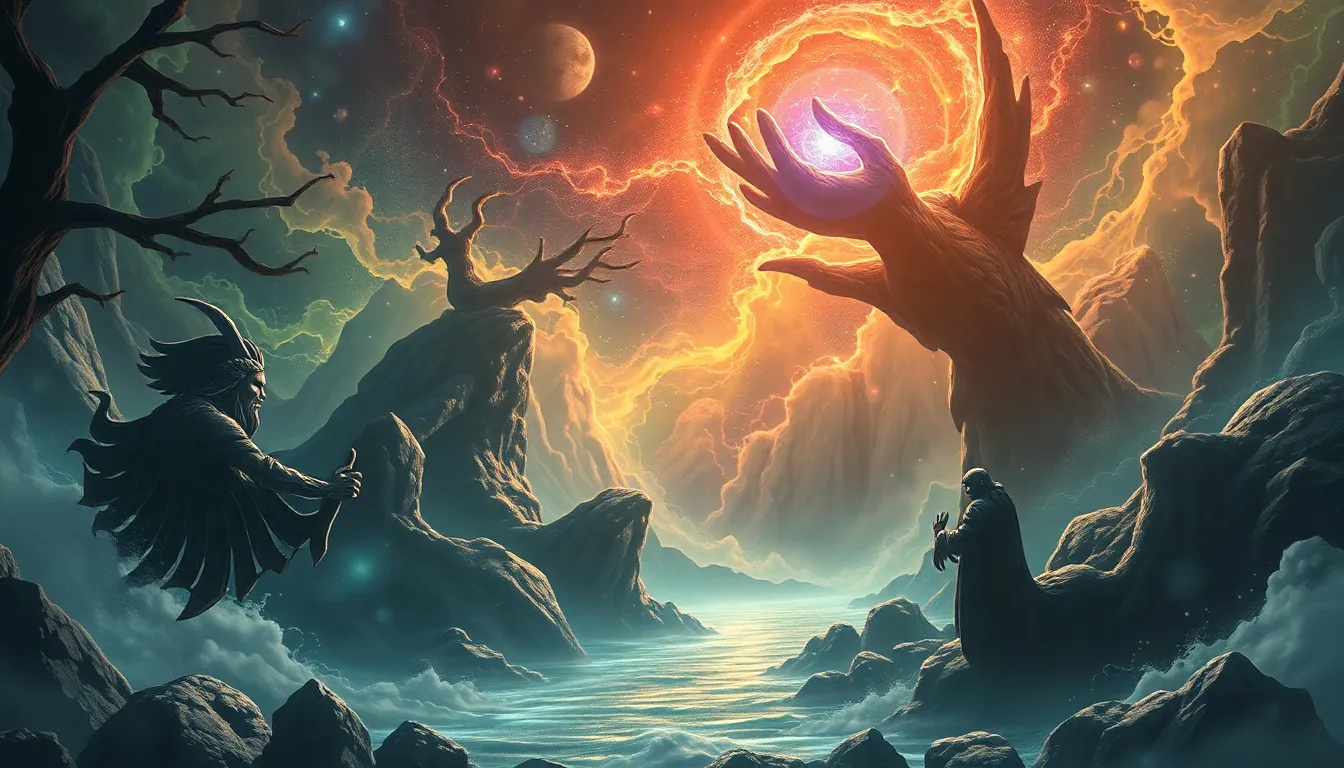Origins and History of Slavic Mythology
Slavic mythology, a rich and diverse tapestry of beliefs and traditions, traces its origins to the Proto-Slavic period, dating back to the 1st millennium BCE. This mythology is shared by Slavic-speaking peoples across Eastern and Central Europe, reflecting their common cultural heritage and worldview.
Slavic mythology evolved over centuries, influenced by interactions with neighboring cultures, including Norse, Germanic, and Celtic mythologies. It encompasses a vast pantheon of gods, goddesses, spirits, and supernatural beings, each embodying specific aspects of nature, human life, and the cosmos.
Key Figures and Deities in Slavic Mythology
At the center of Slavic mythology is Svarog, the supreme god and creator of the universe. Other prominent deities include:
- Perun: God of thunder and lightning, protector of warriors and the community.
- Veles: God of the underworld, magic, and the animal realm.
- Dazhbog: God of the sun and fertility, associated with wealth and abundance.
- Morana: Goddess of death, winter, and the underworld.
These deities symbolize the natural forces, celestial bodies, and human experiences, forming a complex hierarchy that shapes the Slavic worldview.
Traditional Slavic Beliefs and Practices
Slavic mythology influenced various aspects of traditional Slavic culture, including beliefs, practices, and rituals. Ancestors held a significant place, and their spirits were believed to reside in nature. Worship of deities often involved offerings, sacrifices, and festivals held at sacred groves or temples.
Slavic beliefs emphasized the interconnectedness of all living beings and the importance of maintaining harmony with nature. They also believed in the existence of supernatural beings, such as rusalki (water spirits), leshy (forest spirits), and домовые (house spirits), who played a role in everyday life.
Slavic Creation Myths and the Influence on Dances
Slavic creation myths offer insights into the origins of the world and the role of deities in shaping it. One prominent myth involves the god Rod, who created the universe from a cosmic egg. Another myth speaks of the sacrifice of the primordial bull, from whose body the earth and other elements emerged.
These creation myths influenced traditional Slavic dances, which often symbolically reenacted the cosmic events described in the legends. Dances such as the "Kolo" (circle dance) and "Hora" (round dance) represent the cyclical nature of life and the harmony between humans and the universe.
Slavic Rituals and their Connection to Dance
Rituals played a crucial role in Slavic mythology, connecting the community to the divine and ensuring well-being. These rituals often involved music, dance, and symbolic actions. For example, the "Kupala" festival celebrated the summer solstice with bonfires, water rituals, and dances that invoked the sun god Dazhbog.
Through dance, rituals allowed participants to express their reverence, ask for protection, or celebrate significant events in the community's life cycle. Dance became an integral part of Slavic spiritual and social practices, fostering a sense of unity and shared identity.
6. The Role of Spirits and Supernatural Beings in Slavic Dances
Slavic mythology is replete with spirits and supernatural beings that inhabit the natural world. These entities played significant roles in dances, representing the interconnectedness between the human and spirit realms. Dancers often donned masks or animal skins to embody these creatures, paying homage to their power and influence.
The "Vodnik" (water spirit) was often depicted in dances, with performers mimicking its movements in the water. Rusalki (female water spirits) were believed to lure men to dance with them, leading to their doom. Dances also honored the "Domovoi" (house spirit), who guarded the home and family.
7. Symbolism and Imagery Derived from Slavic Legends
Slavic dances incorporated a wealth of symbolism drawn from legends and folklore. The "Kolovrat" (sun cross) symbolized eternity and the balance of light and darkness. The "Perun's Axe" represented the power of Perun, the god of thunder and lightning. Dancers used hand gestures and body movements to depict animals, elements, and other aspects of Slavic myths.
8. Specific Dance Styles Influenced by Slavic Mythology
Specific dance styles emerged that were heavily influenced by Slavic mythology. The "Hopak" is a Ukrainian dance characterized by energetic squats, kicks, and jumps, mimicking the Cossack warriors. The "Polonaise" originated in Poland and is a stately ballroom dance that originated from Slavic folk dances. The "Krakowiak," also Polish, features vibrant leaps, turns, and colorful costumes that reflect the region's folklore.
9. Regional Variations and Adaptations of Slavic Dances
Slavic dance traditions evolved differently across regions, leading to unique variations. Eastern Slavic dances, such as those from Russia and Belarus, often featured intricate footwork, flowing movements, and storytelling elements. Southern Slavic dances, including those from Serbia and Croatia, were known for their rhythmic vitality and exuberant group formations.
In the Balkans, Slavic influences blended with other cultural traditions, giving rise to unique dance styles like "Oro" and "Kolo." These dances showcase the rich fusion of Slavic, Balkan, and Eastern influences that shaped the region's dance heritage.
10. The Revival and Preservation of Slavic Dance Traditions
In the 20th and 21st centuries, there has been a resurgence of interest in preserving and reviving Slavic dance traditions. Folk dance companies and cultural organizations have emerged that teach and perform traditional dances, ensuring their survival in the modern era.
UNESCO has recognized many Slavic dance styles as part of its Intangible Cultural Heritage of Humanity, highlighting their importance to cultural diversity and identity. Initiatives to document and promote dance traditions ensure their continuity in the face of globalization and cultural homogenization.
FAQ
Q: What is the origin of Slavic mythology?
A: Slavic mythology originated from the Proto-Slavic period around the 1st millennium BCE.
Q: Who are the main gods and goddesses in Slavic mythology?
A: Key figures include Svarog (supreme god), Perun (god of thunder), Veles (god of the underworld), Dazhbog (god of the sun), and Morana (goddess of death).
Q: How did Slavic mythology influence dances?
A: Dances reenacted creation myths, incorporated supernatural beings, used symbolic gestures and imagery, and varied regionally based on mythological influences.



